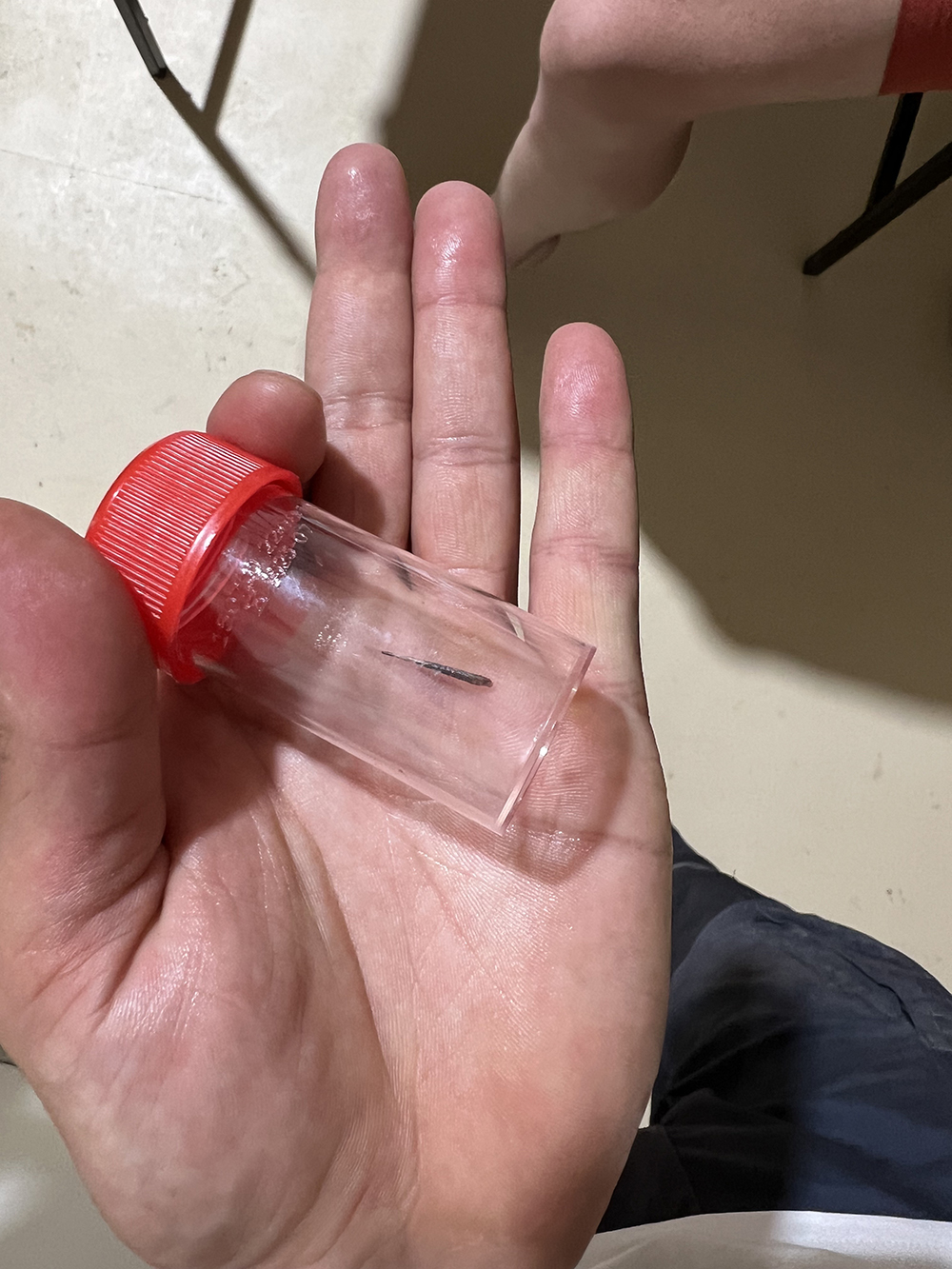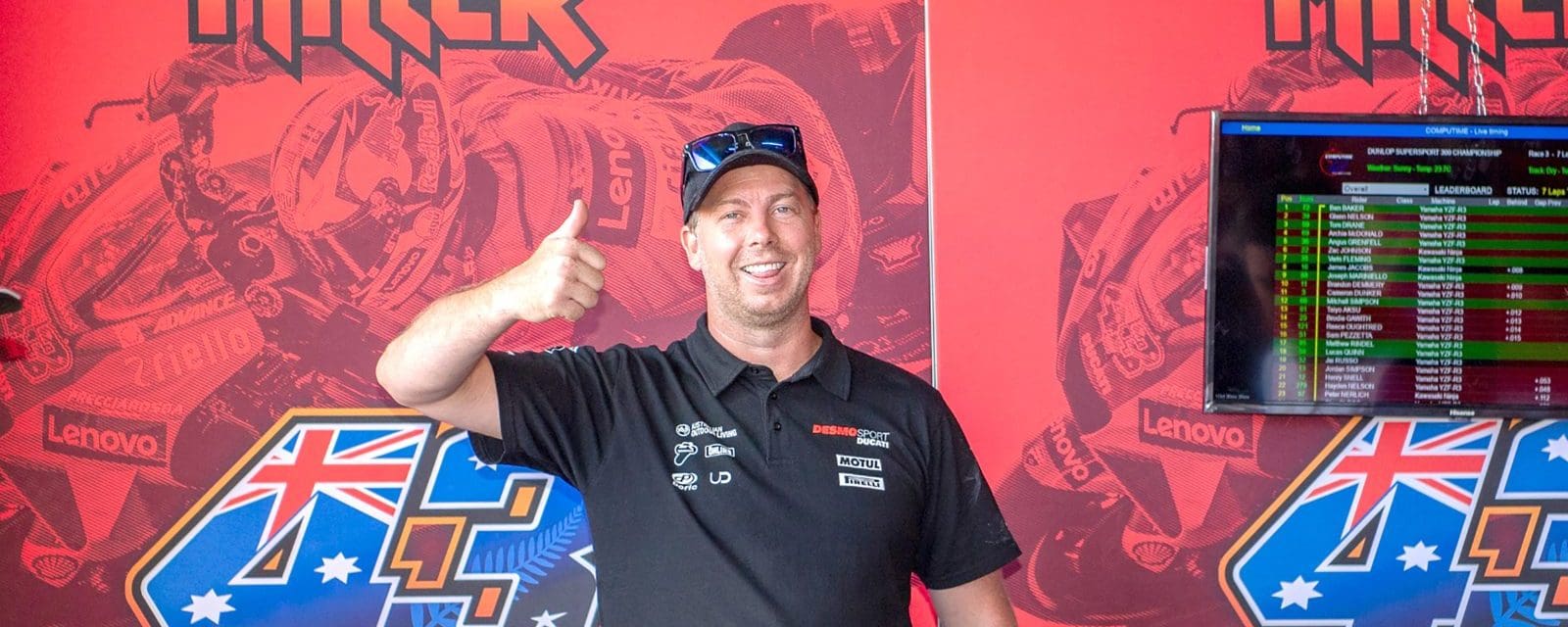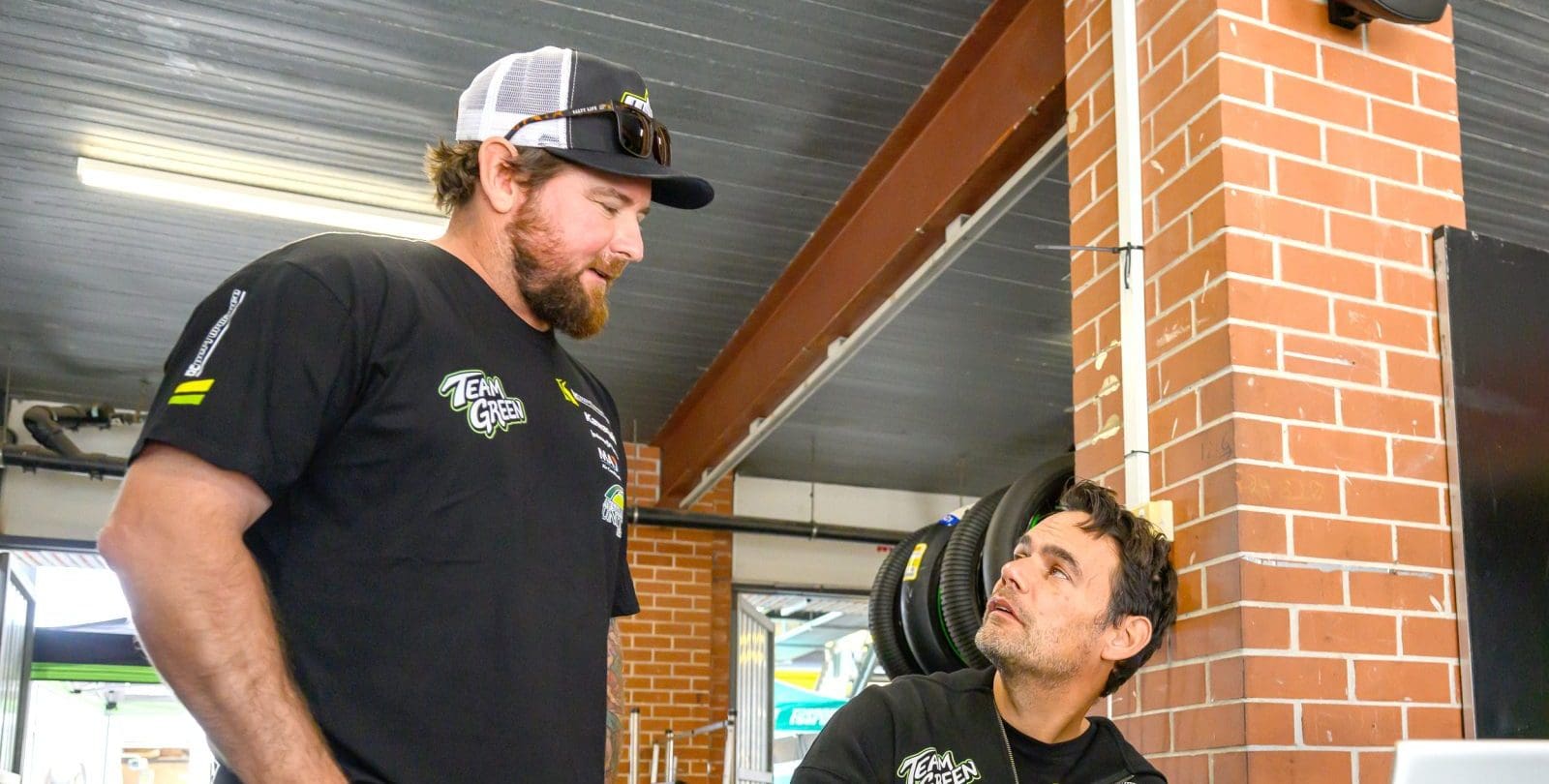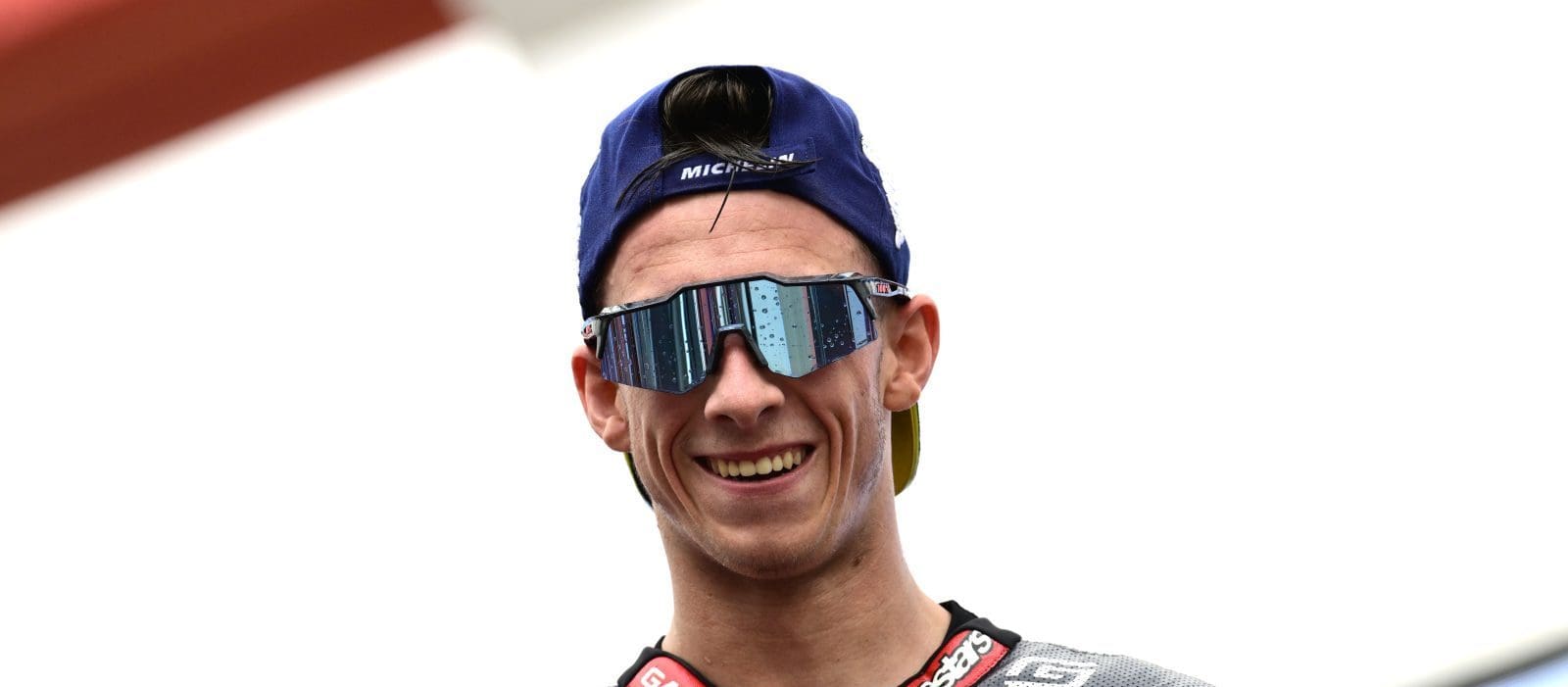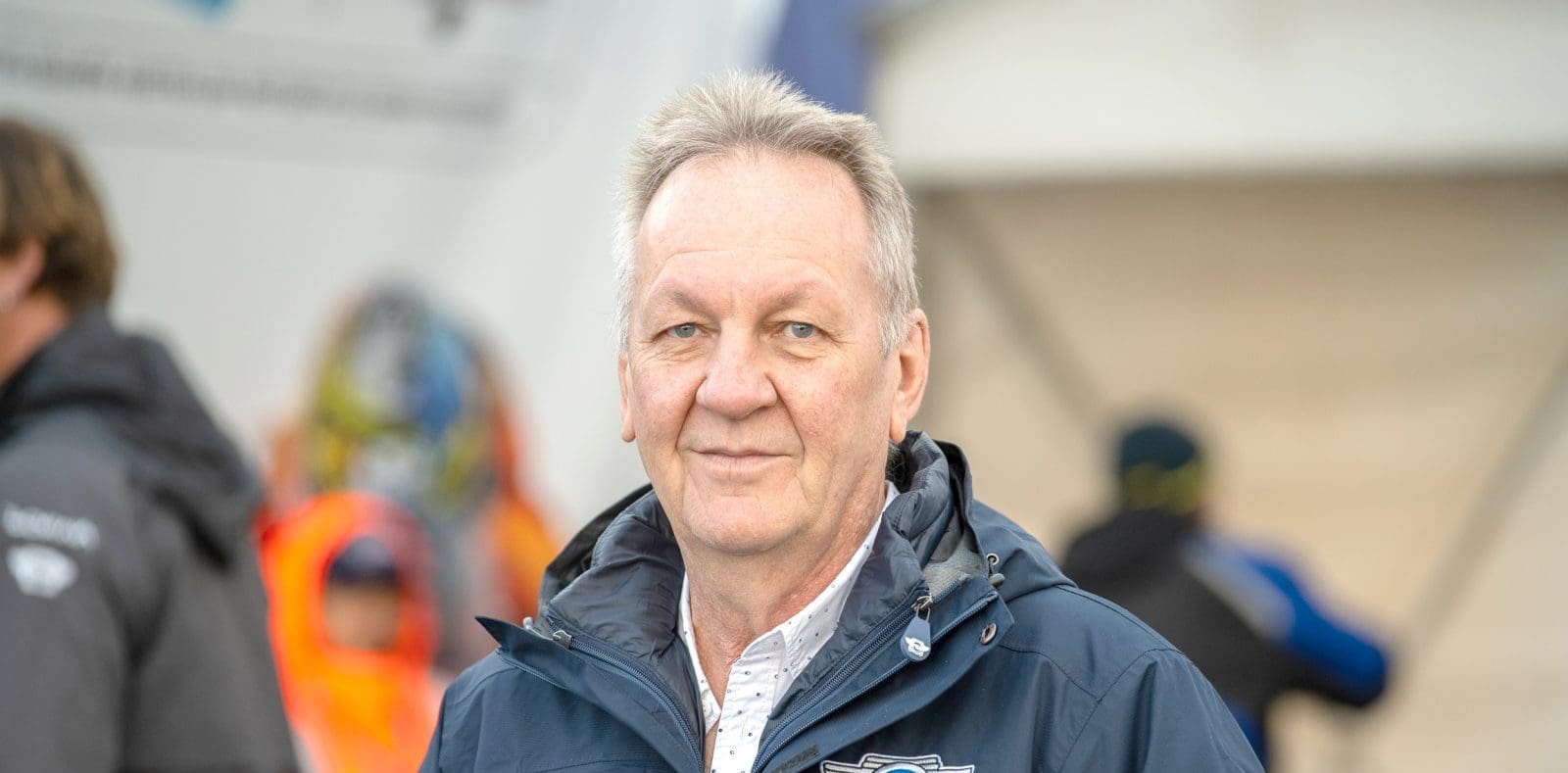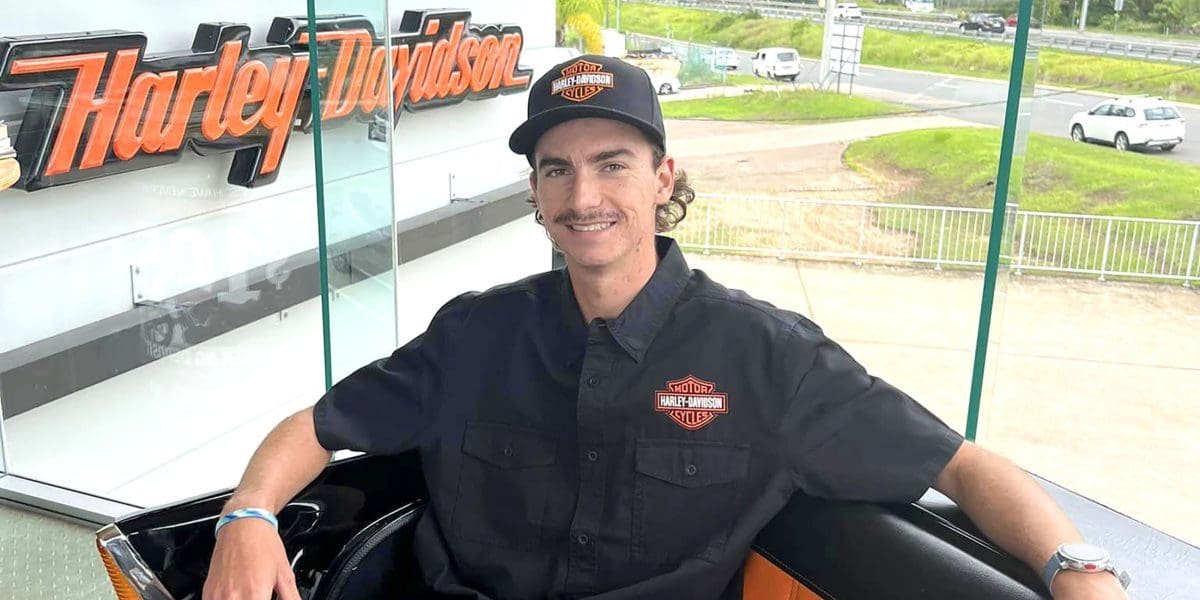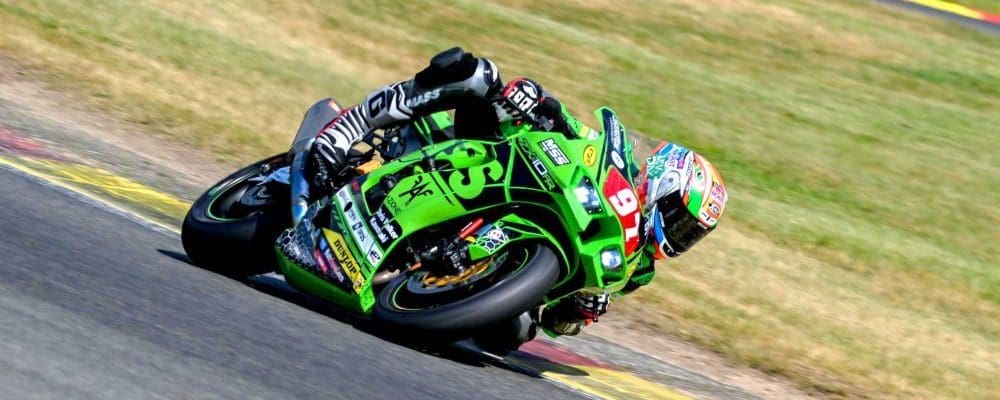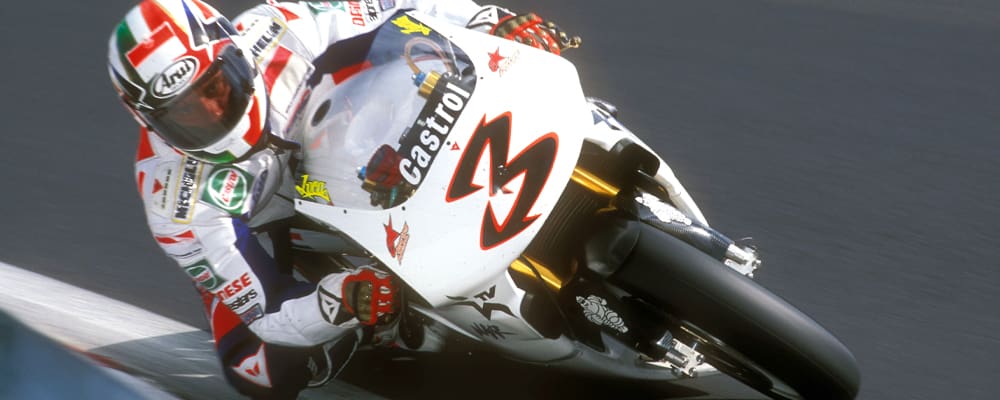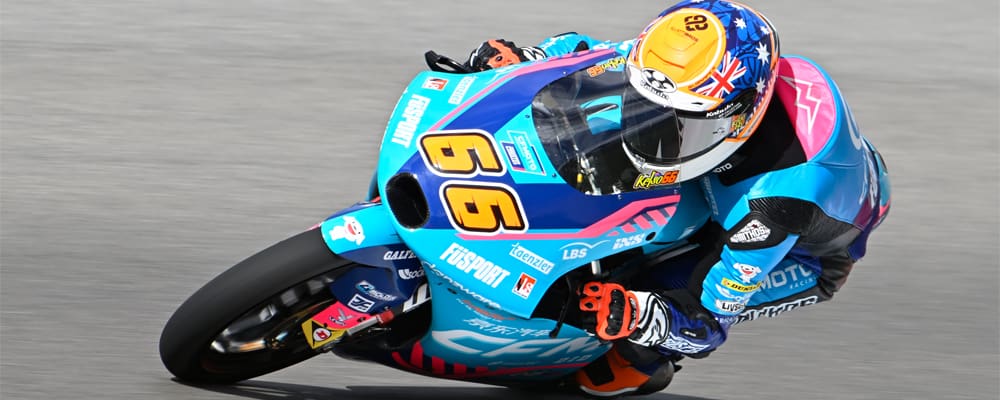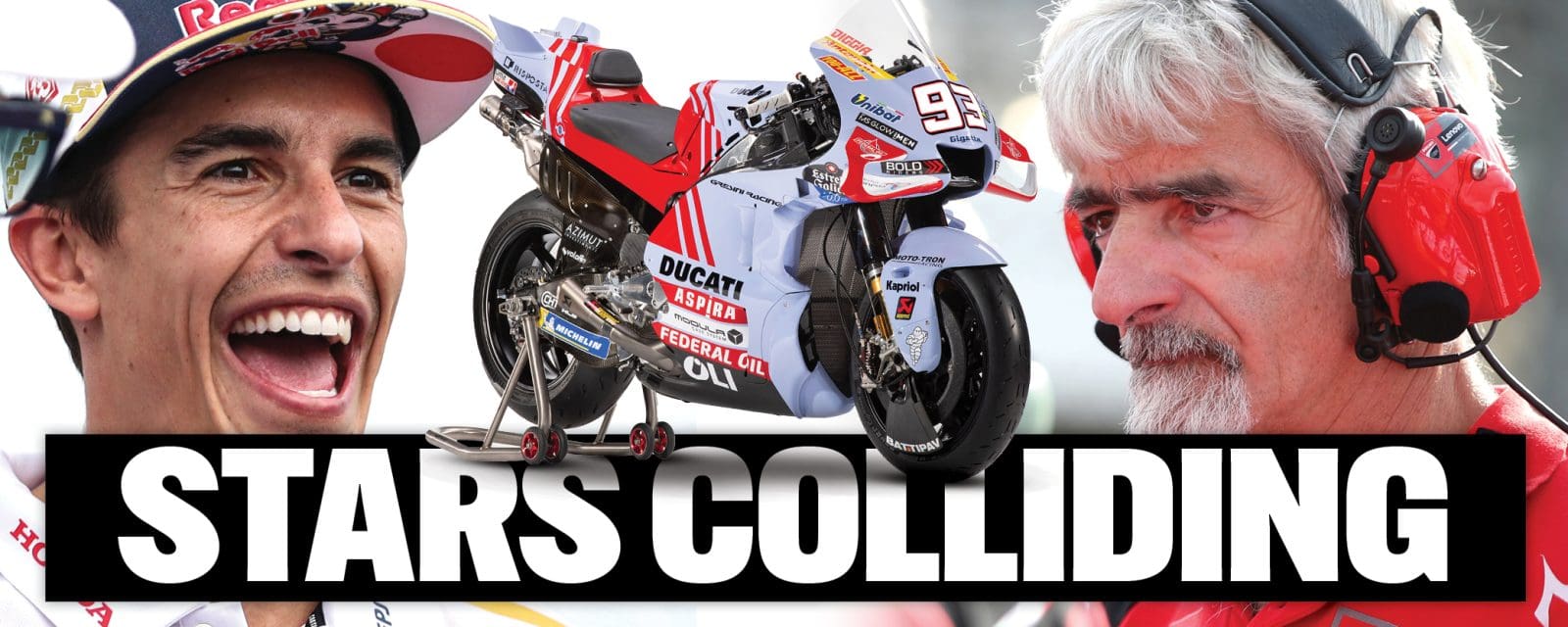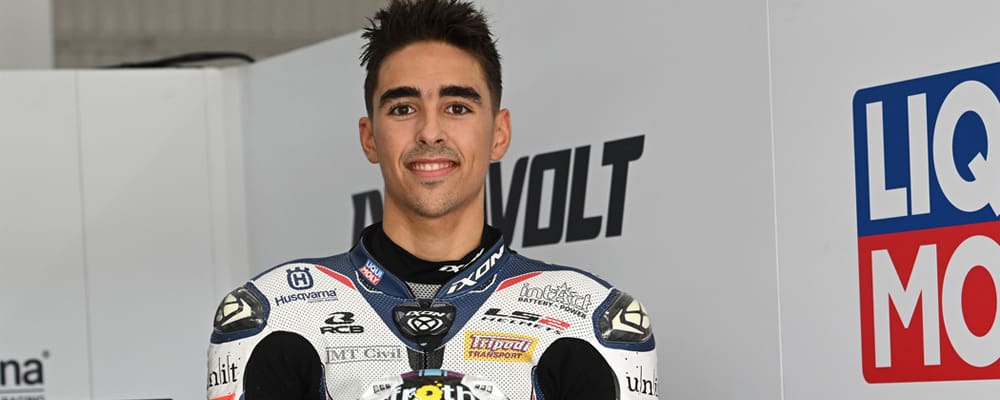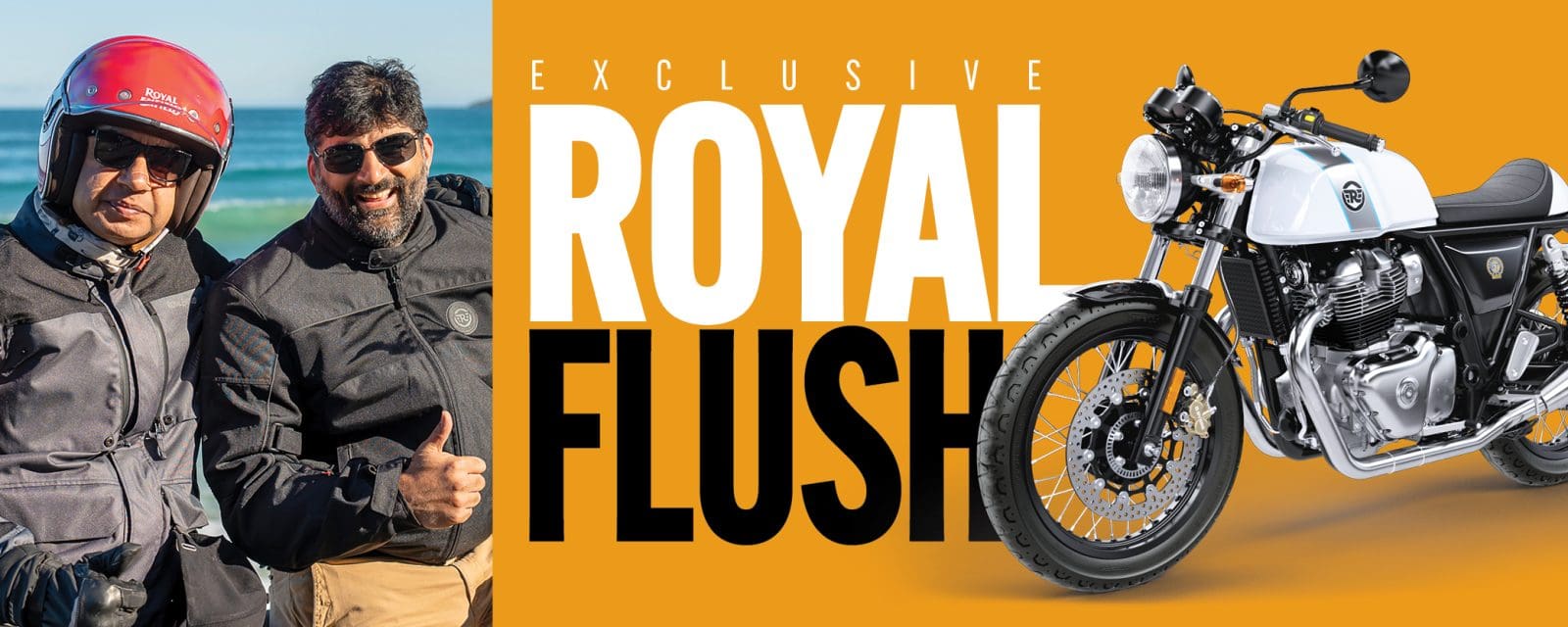The 2023 Dakar Rally will be remembered across the globe for a bunch of reasons, but for Aussies, it will forever be the one that got away. Two-time Dakar motorcycle champion, Toby Price, missed the top step of the podium by a mere 43 seconds, the closest winning margin in the 45-year history of the infamous race. Forty-three seconds after 14 long days with more than 44 hours of race time, with the win going to Price’s Red Bull KTM factory teammate, Kevin Benavides – the Argentinian notching up his second Dakar victory in an absolute thriller.
Heading into the final stage, Price held a slender 12-second lead over Benavides which is unthinkable considering the ground covered in all kinds of conditions to get to the final-day showdown between the duo.
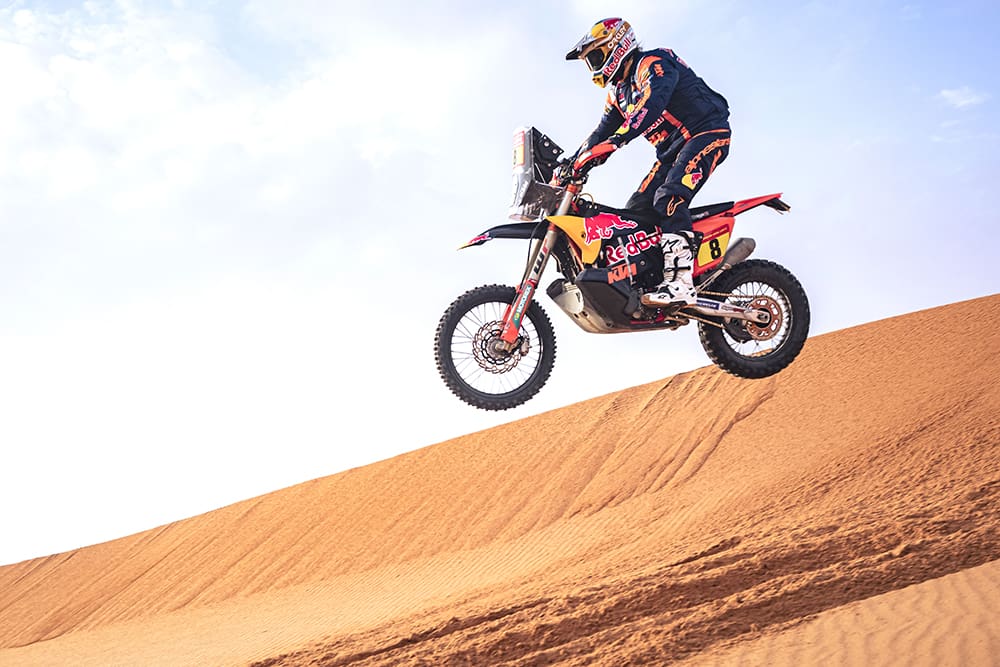
The final stage was made all the more interesting by the field starting in reverse order, as well the all-important hidden waypoints reduced considerably in diameter which made them even harder to find.
“To do forty odd-hours of racing in stage times and to lose it by 43 seconds is a tough one to swallow,” Price so aptly stated after the race, which was the longest in over a decade.

There’s no denying Benavides rode a great race and, looking from the outside in, his event was not too dissimilar from the strategy used by Price. However, there were some crucial moments that appeared to work in the Argentine’s favour.
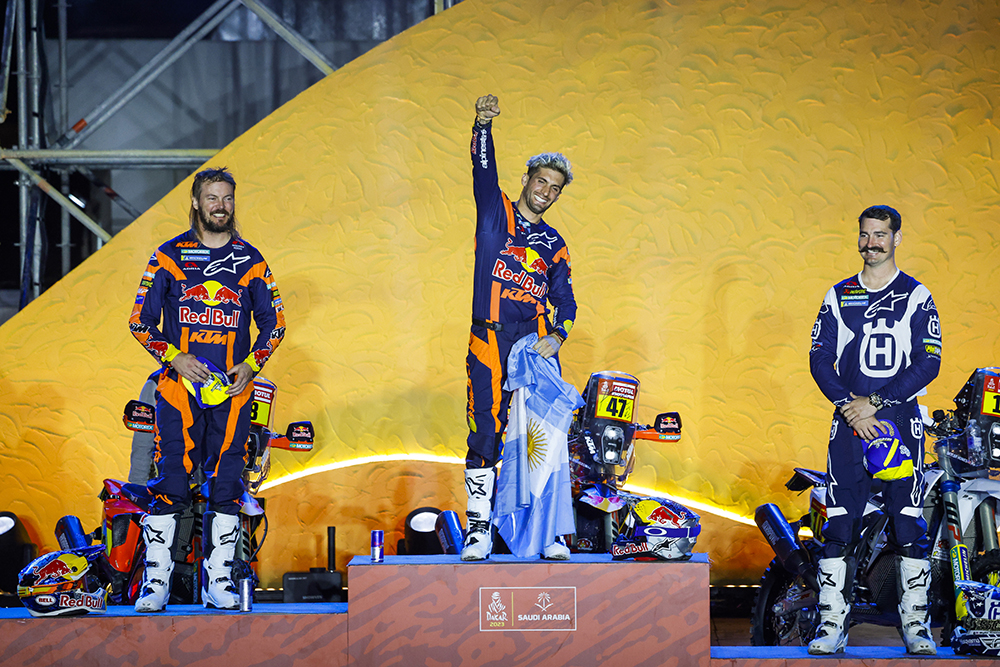
It’s been said many times before but it does ring true: you rarely see an unlucky champion and, at Dakar, you need all the cards to fall your way.
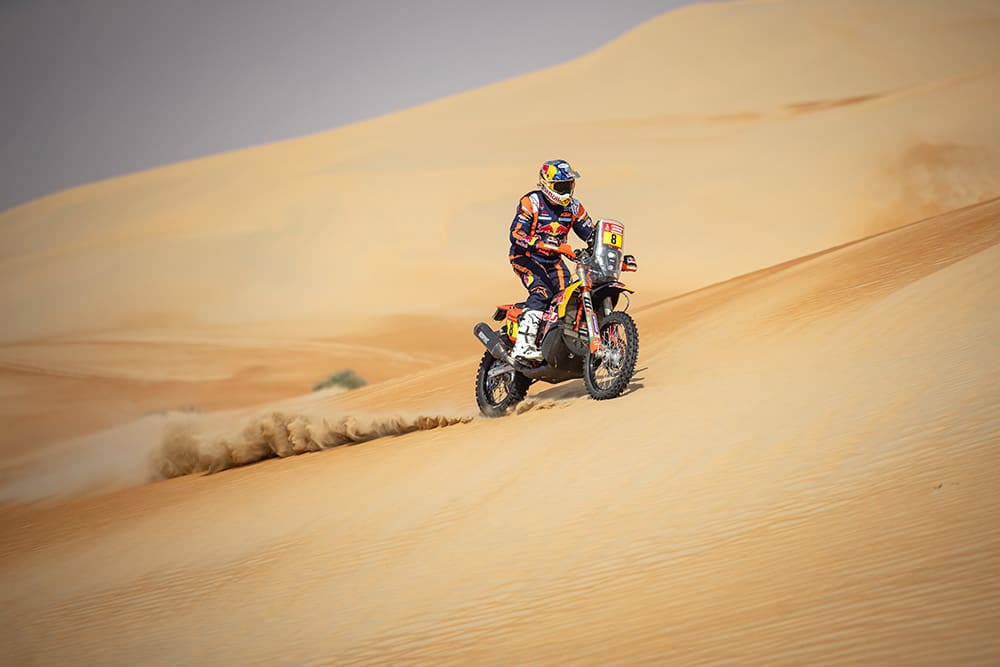
Smart strategy
Perhaps for the first time since his maiden Dakar appearance in 2015, Price was not at the top of the pre-race favourite list.
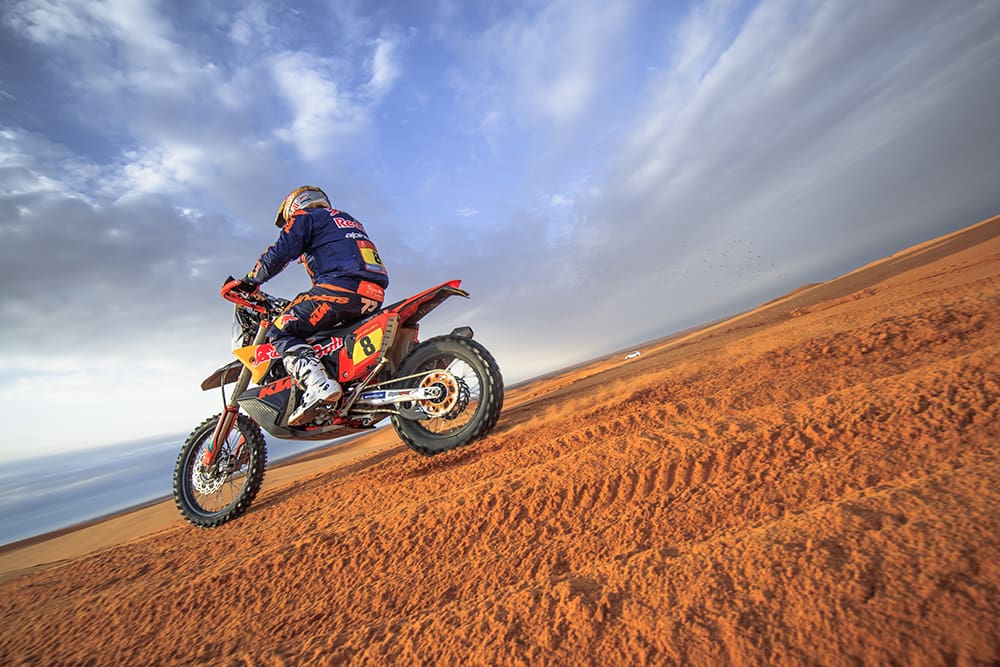
A 10th place at Dakar in 2022 along with recent injuries and yet more surgery after crashing in the final round of the 2022 Cross-Country Rallies World Championship last October put Price at long odds of being an absolute frontrunner.
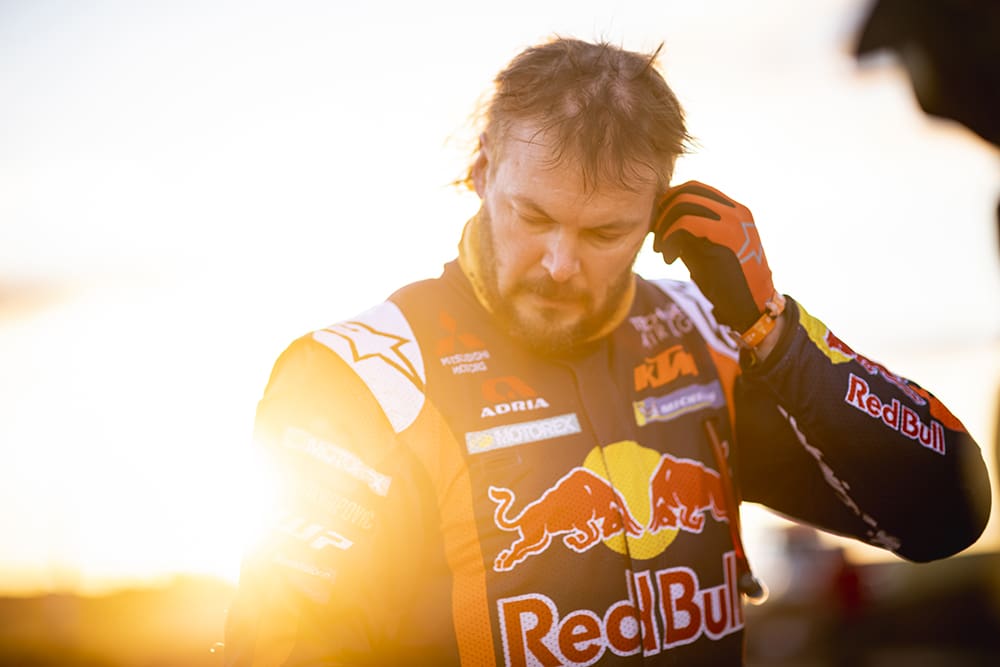
The old boy, aged 35, was entering his ninth Dakar and many predicted it to be his last on a bike – another top-10 result looked likely. But then Price did what Price does and came up trumps in the official prologue, closely followed by fellow Aussie Daniel ‘Chucky’ Sanders on his factory GasGas. Pricey was on, but prepared to let the race come to him.
“I planned to ride the first eight days conservatively but remain consistent, so I stayed within range of it all.”
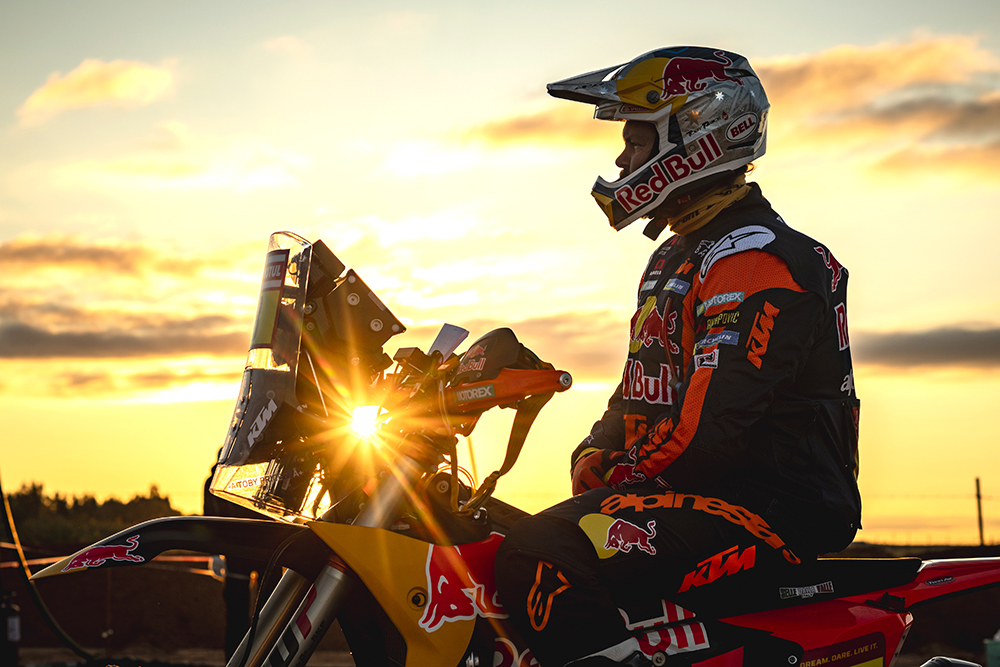
This was a smart strategy that paid off big-time. Winning stages at Dakar is great, but it also means the rider then leads out the next day with all the associated navigational pressure – and potentially making it easier for riders behind to follow the tracks and get a run on.
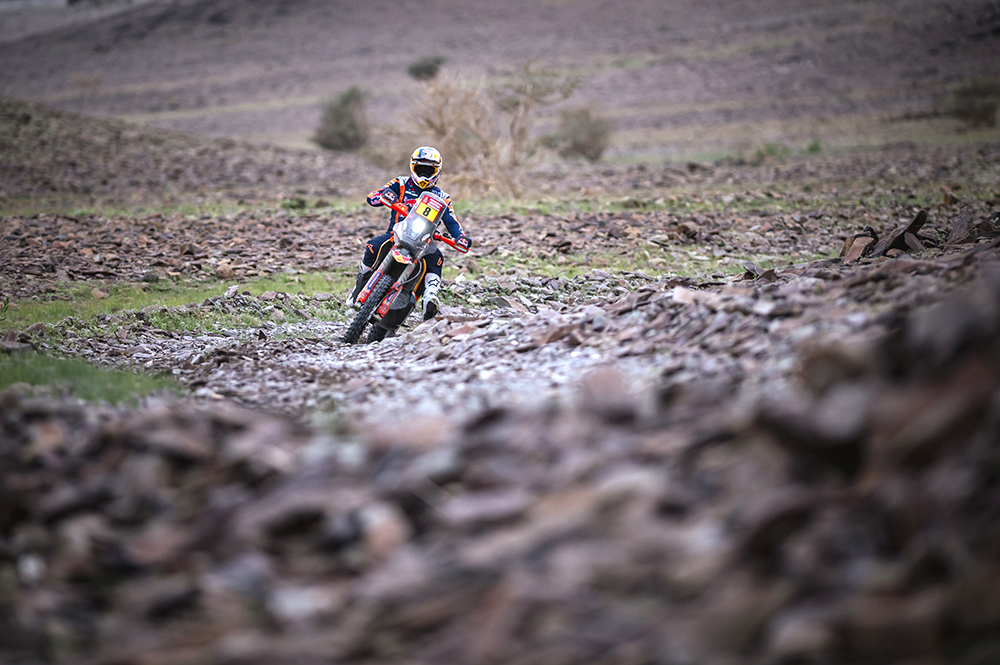
Navigational errors can cost precious time, while adding to the complexity of Dakar were a number of rule changes for 2023.
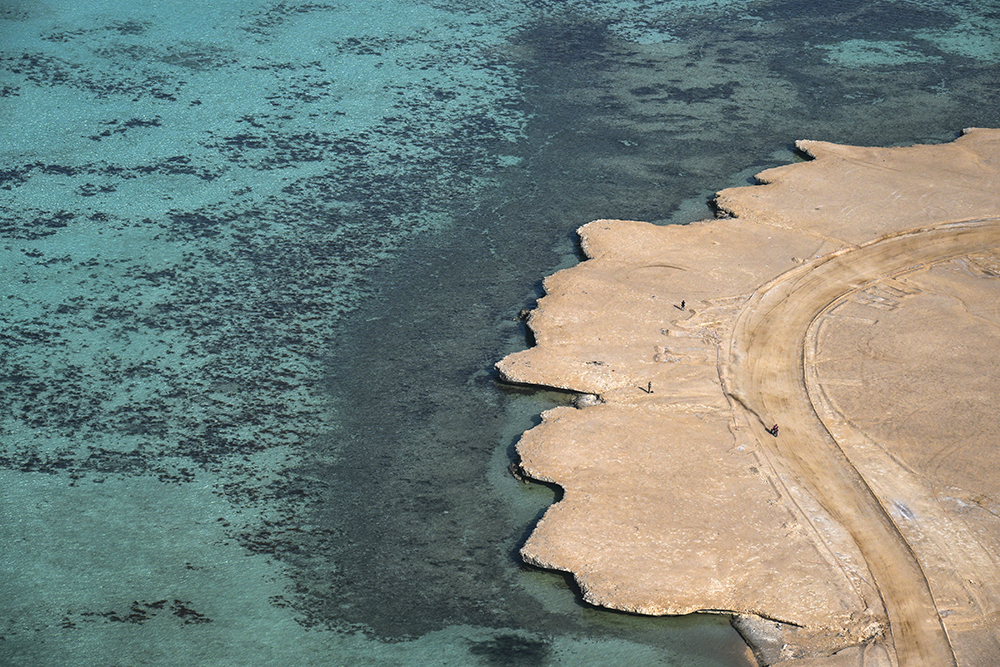
“The 160km/h speed limit that was introduced this year didn’t change anything really; all manufacturers could run at that speed,” said Price. “The bonus time for winning a stage came into play a bit more than we were predicting.
“We looked at last year’s stage times and an average amount of time lost by a rider opening a stage was around 17 minutes, so we thought a five- or six-minute benefit wouldn’t really come into play too much.
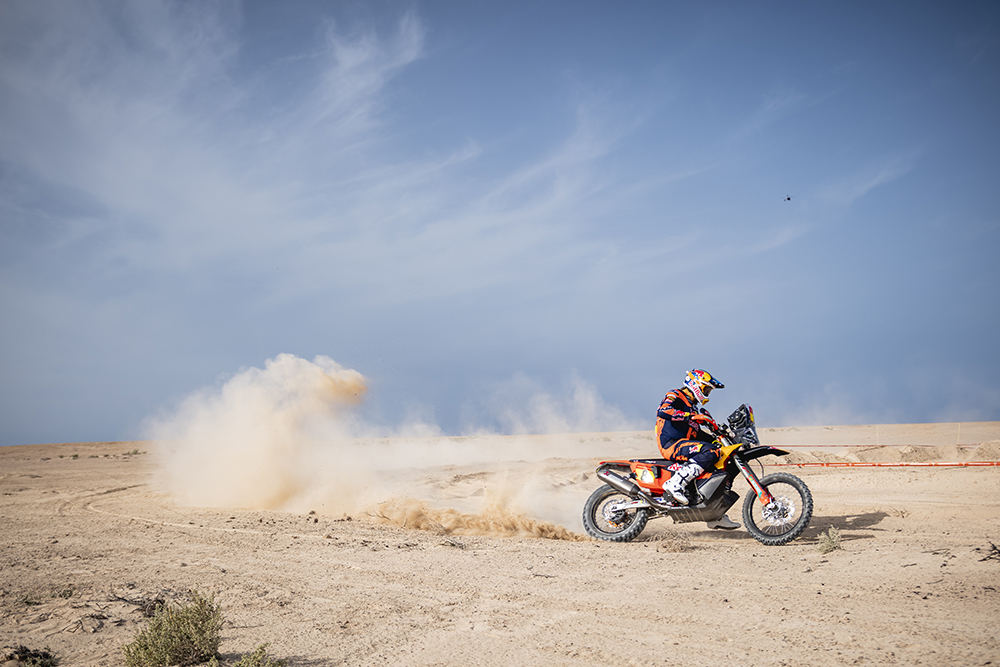
“But the roadbook seemed to explain what was to come on the stages a little better, so it was a little bit more direct. This year you only saw riders getting lost for up to 15 minutes and the average time lost by riders leading out would have averaged about the seven-minute mark so
the bonus time did come into play – which I wasn’t expecting. That is why I had to start gaining bonus time back in the second week and moving towards the front.
“By Stage 9 I began putting my head down a little bit which was all panning out and working good. I got the overall lead with a couple of stages to go.”

Price began the second-last stage with a narrow 28-second lead over eventual third-placed rider Skyler Howes (Husqvarna), while Benavides was over two-and-a-half minutes behind. This is when the cards started falling in Benavides’ direction.
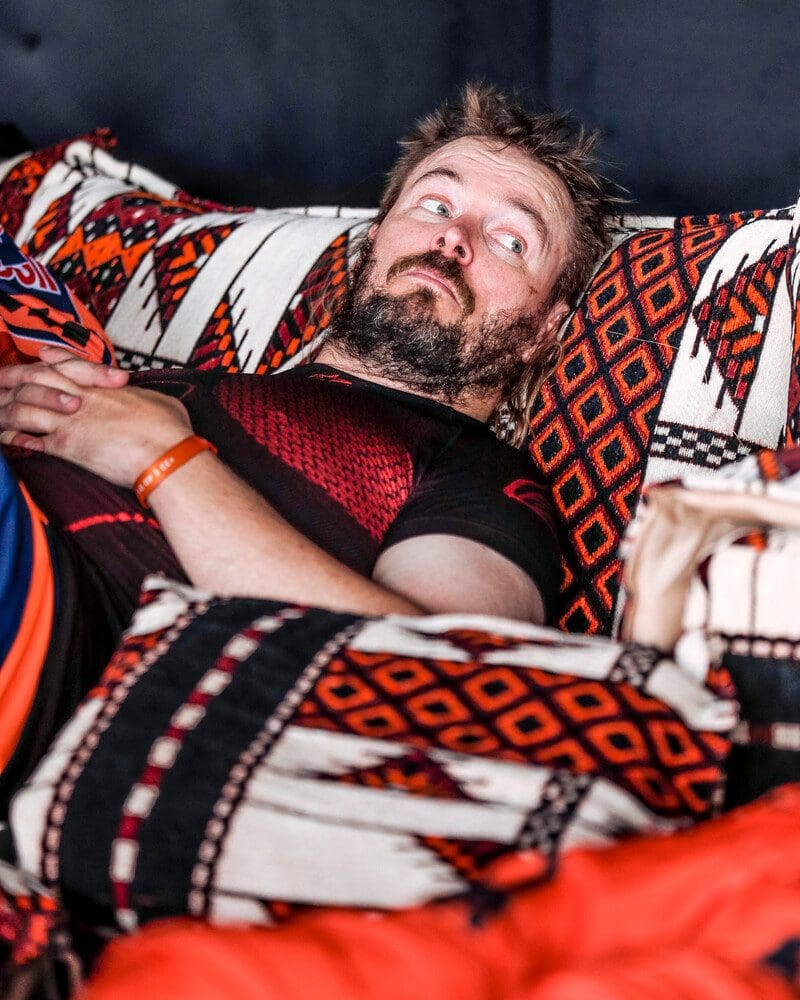
Price’s other Red Bull KTM teammate Matthias Walkner went down in a crash, and Benavides was the first on the scene who stopped to call in the medivac chopper.

Benavides rejoined the race at the rear of the field and put on a charge and, after being awarded 23 minutes of compassionate time for assisting Walkner, he won the stage.
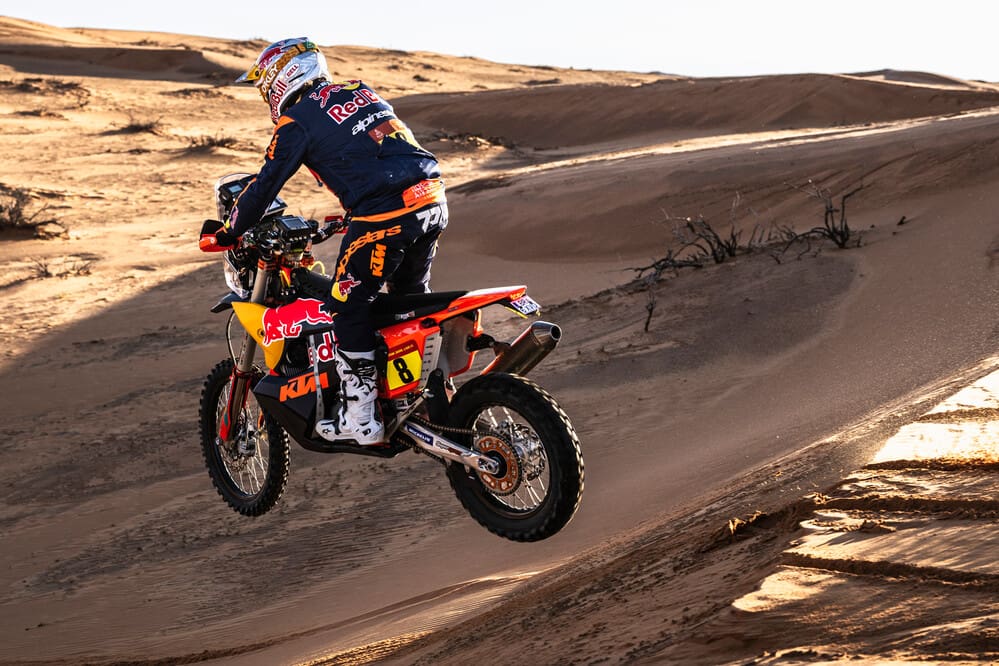
Price now held a minimal 12-second lead heading into the final stage.

“That last stage was a bit of a chaotic thing with the event changing all the hidden waypoints in the first 40km and the last 30km,” lamented Price. “And I ended up virtually starting the stage last and I ended up missing one of those waypoints by I don’t think anything more than five or 10 metres. I had to turn around to go and get it. It was frustrating how that last day worked out with the reverse grid and the waypoints reduced to a 20m radius; it kicked me in the backside.
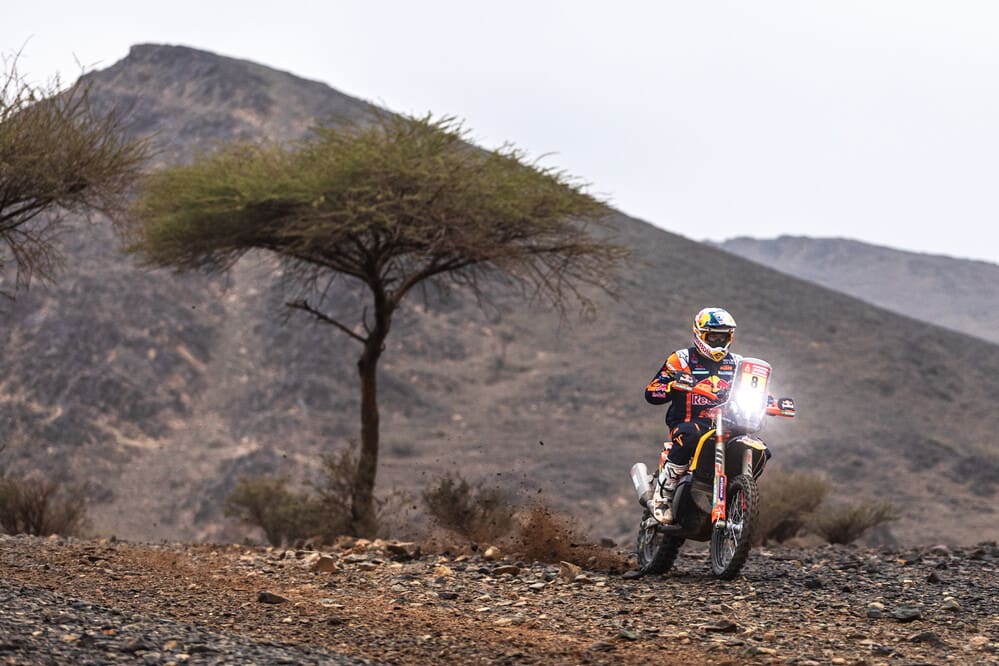
“There is a whole heap of different waypoints but the majority have a validation radius of 90m and, in some instances, up to 300m. But these WPP waypoints with a 20m radius in the middle of the desert, on the edge of the ocean can make them hard to find, especially when you are riding at 130km/h or 140km/h. That’s the one that cost me a fair bit.
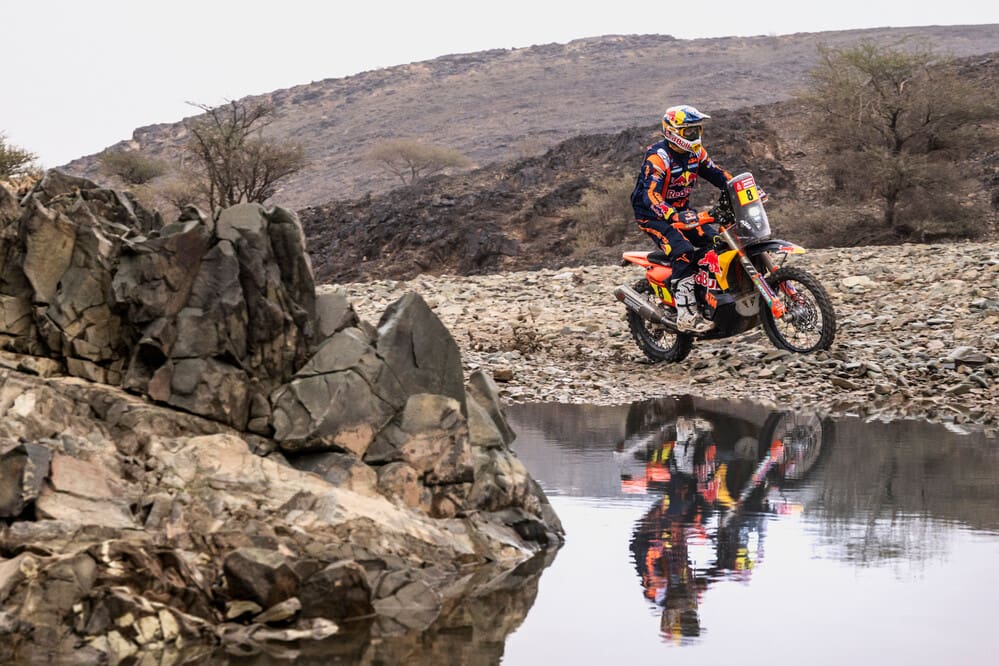
“Looking at sector times from 0-30km we were pretty much tied, even after missing a couple of waypoints, but I realised I missed them quite early. But the one that cost me, I was 1.5km down the track in camel grass where I was trying to concentrate on riding the bike and keeping on two wheels. I feel like had put myself in a good position.
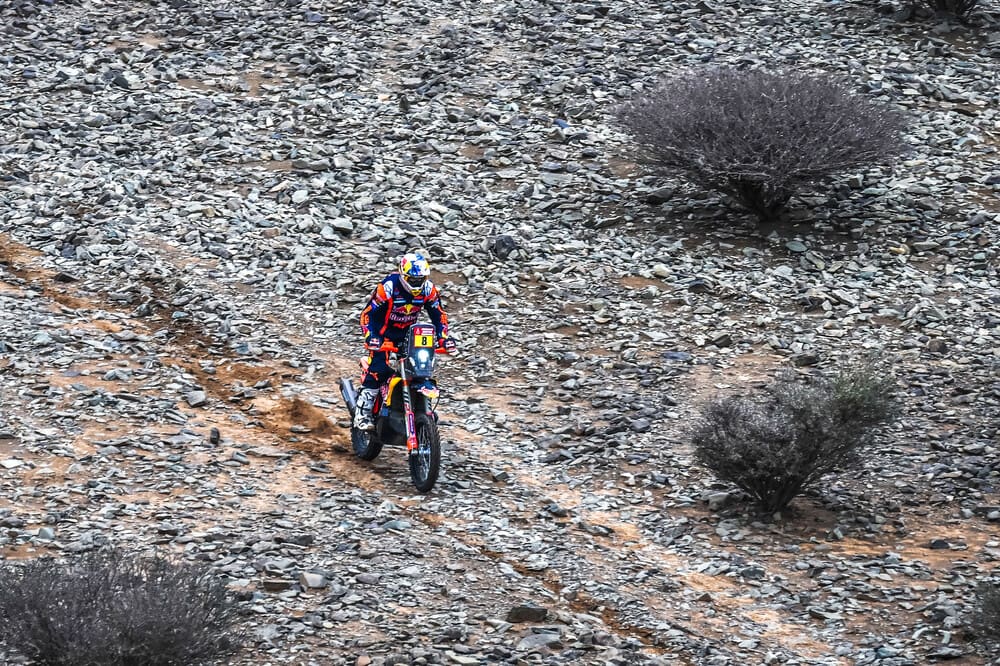
“Yeah, there was probably two or three stages where I could have gone 100 percent for the entire day and maybe that could have made the difference in the end.
“But then again it could have changed the entire direction of my race by leading out the next stage and kicked me in the backside.
“You can’t really look back on the stages too much and say, ‘I could have went faster on this one or I shouldn’t have sand-bagged so much on this one.’ I was in contention and in the right place, but it didn’t pan out on the last stage and that was the one that got us.”
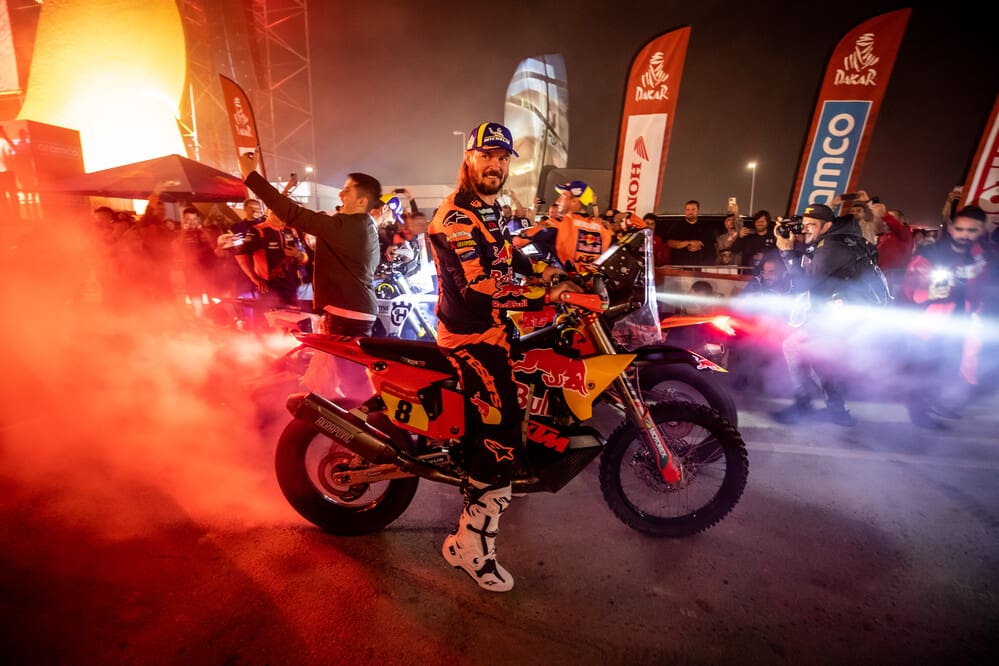
Chucky’s charm
For Daniel Sanders, the 2023 Dakar was one hell of a rollercoaster ride. The GasGas factory rider came in underdone. In fact, if Chucky was a chicken being prepared in one of Gordon Ramsay’s kitchens, his level of underdone would have caused some serious food poisoning – which ironically, is exactly what almost caused him to withdraw from the event.
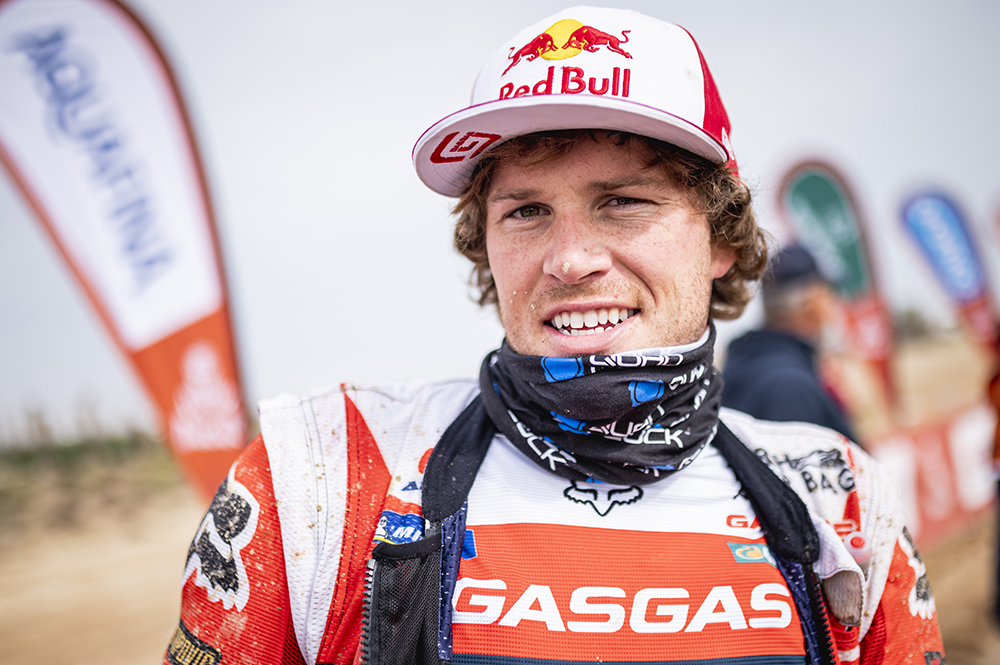
Sanders endured a horrific 2022 following injuries sustained in that year’s Dakar. Despite winning the 2022 Hattah Desert Race, Sanders remained sidelined for most of the year with an elbow injury that would not heal, requiring further surgery.
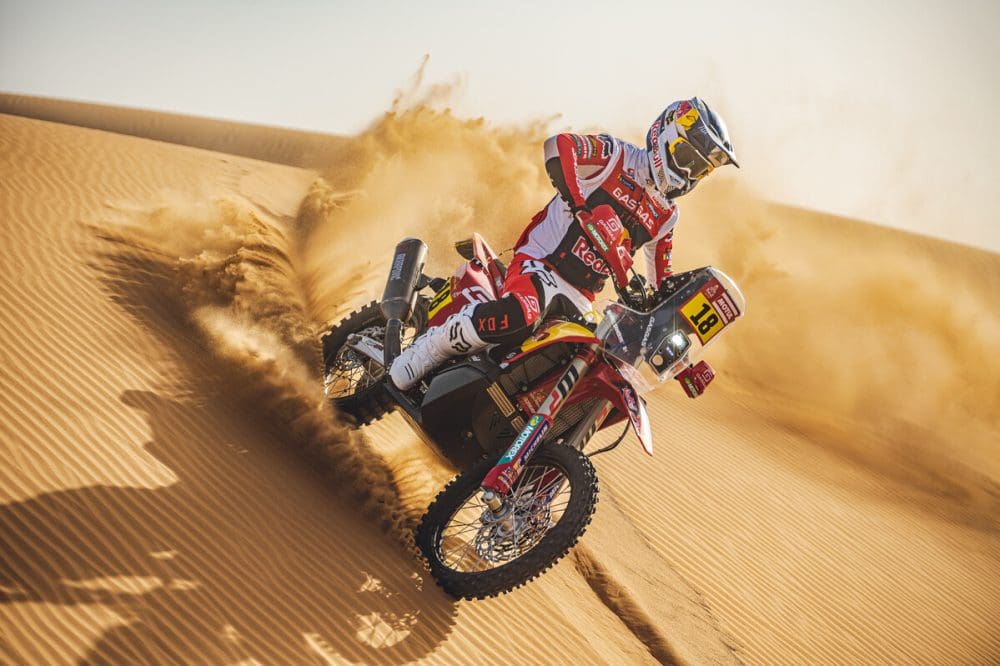
“I considered not even going to Dakar being so under prepared. But Dakar is the main event of my contract and missing that race is like missing an entire year,” Sanders said. “My family and Grabbo (Sanders’ mentor Ben Grabham) all advised me to just go and get to the finish doing whatever I could do. I had two weeks riding motocross and enduro at home then I only had five days on the bike before this race. That was it. Nothing more. Say that to any professional athlete: you have five days to prepare for your sport.

“My goal was to try and win a stage and finish top-10. If I was on the old bike that I was confident on, I knew what it was capable of and what I could do with it. But I had no time on the new bike and I struggled so much trying to find a setup with having no strength in my arm, no testing with the team and no development in that bike for the year. I struggled a fair bit.
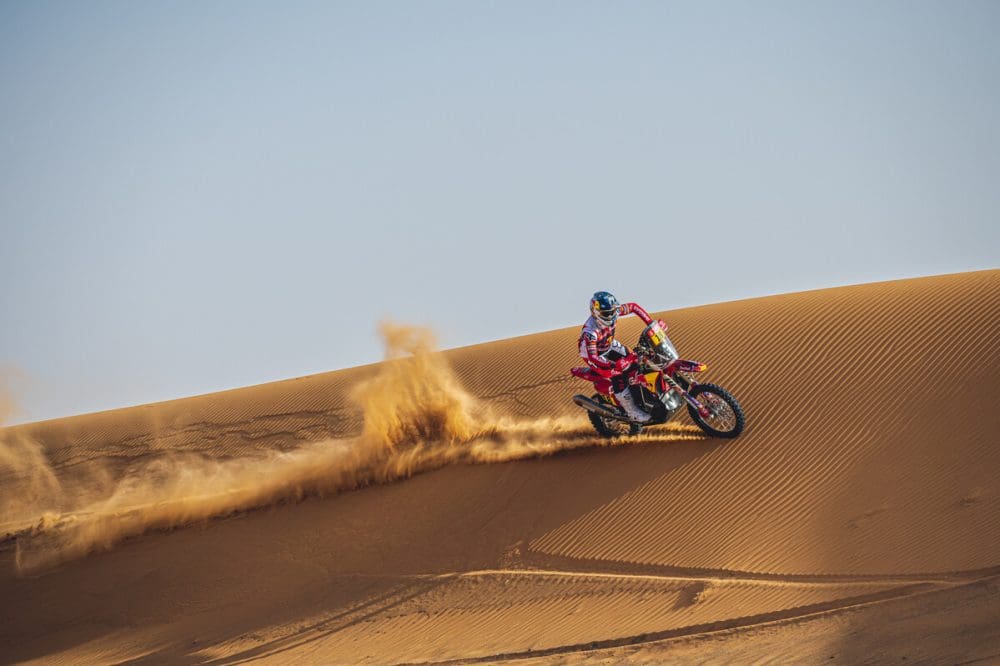
“It was a mission, that’s for sure. I got the thorn in my arm on day two. Then a couple of days after that I got sick. The thing is I ate the same food as everyone else, so I don’t know what it was.
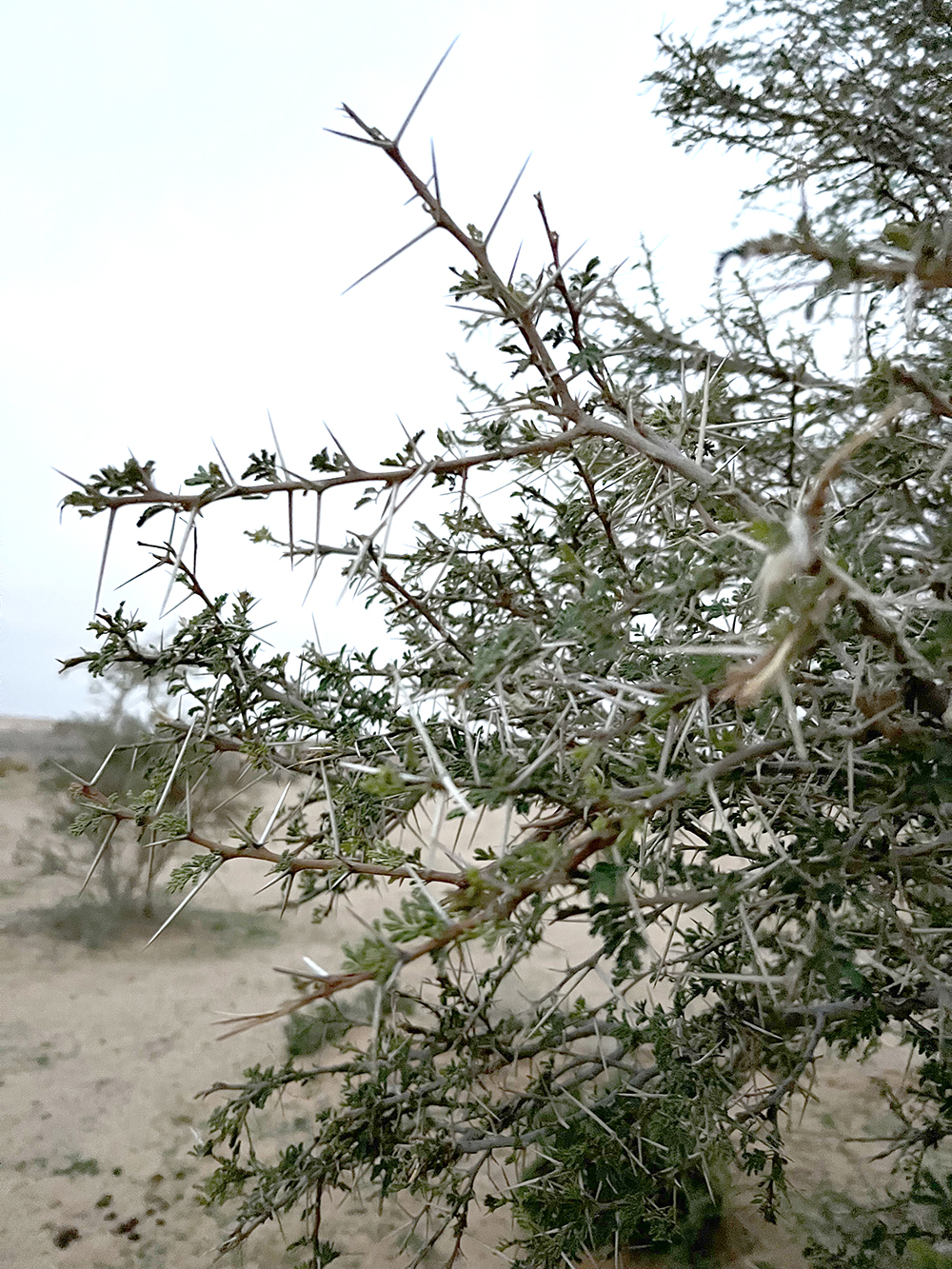
“Maybe someone sprinkled my food with some Arabian herbs? I had a mad dump after stage four. I was that impressed with it I almost took a photo of it. I nearly filled up the camper toilet. It was huge. If you got the biggest mixing bowl from your kitchen, you could fill it with what I shat out. It was absolutely insane.
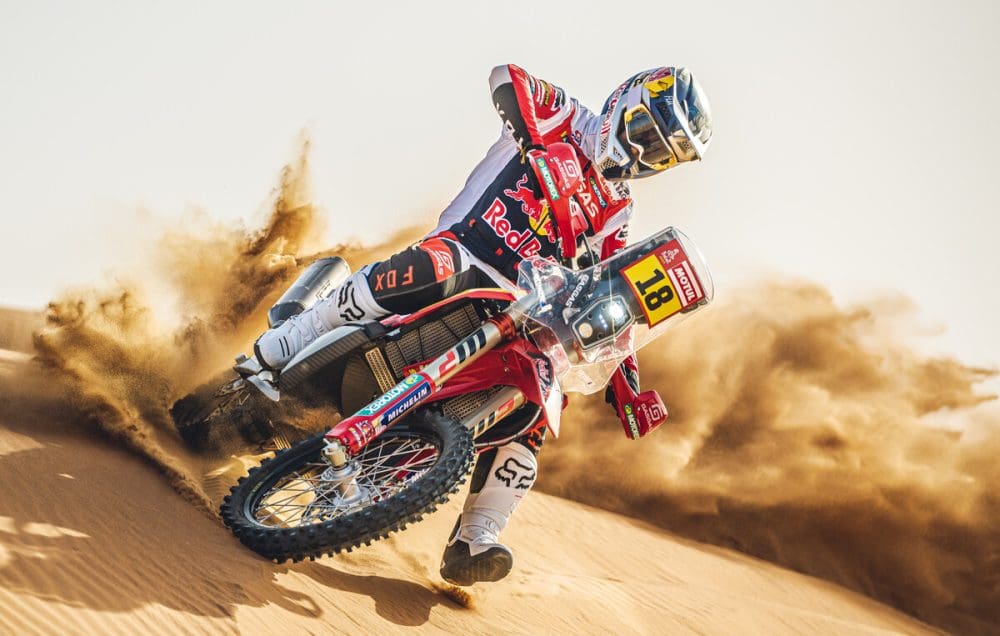
“Then that night I felt like a spew and I started spewing and shitting. I was no good at all. I couldn’t eat breakfast so I just had some coffee to get me to the start. I shat twice just getting there and just before the start after loading my roadbook I needed to shit again.
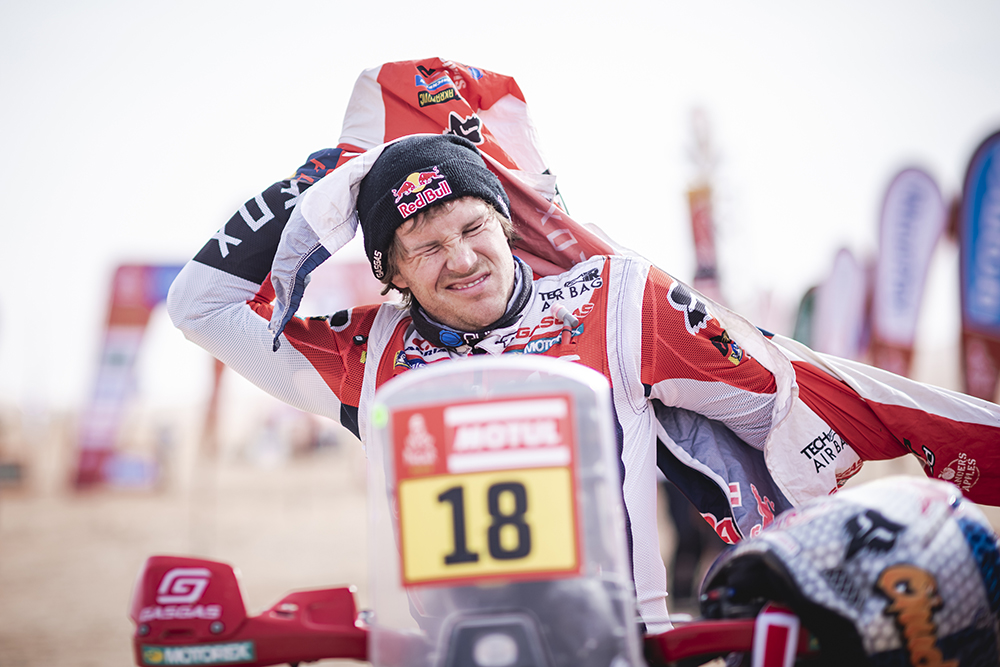
“It was a day with 100 percent sand and I knew I had pace so I just needed to cruise to not lose too much time. I just tried to latch on to riders that passed me and my stomach was grinding the entire day, I had no energy and was blurry in the head. It was not fun and it was a massive stage.”
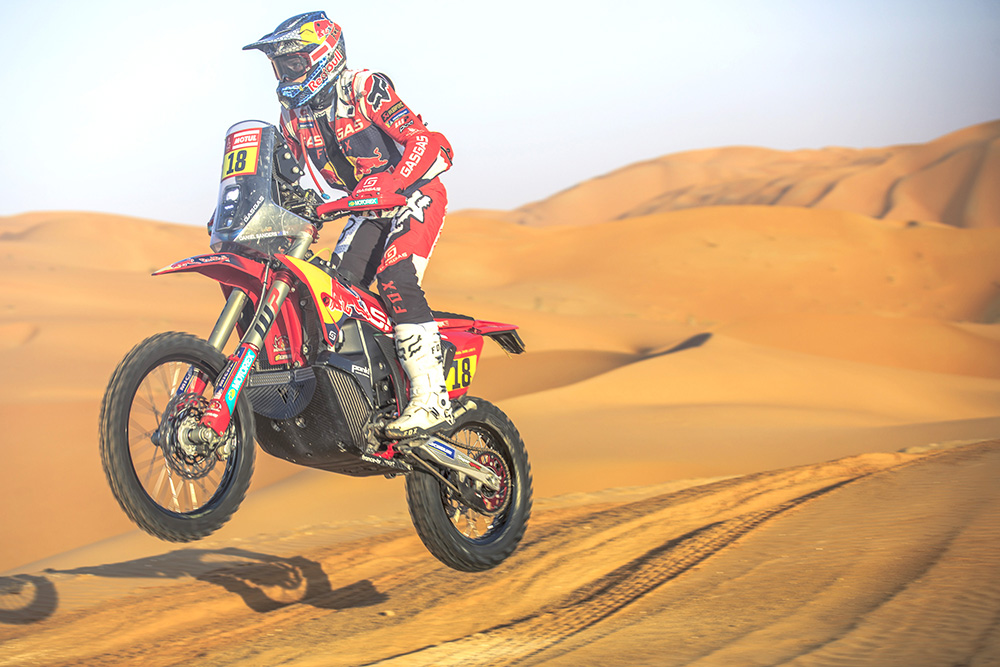
Sanders recovered from the food poisoning and chipped away at the race only to lose a chunk of time opening Stage 9 and, as Sanders put it: “I got put back 20 minutes and was thrown out of the podium battle. We know that it’s not always the fastest rider that wins the race. And this year navigation didn’t play a huge part – you’ve just got to be lucky on the right day and in the right spot. “You don’t know what day is going to be a shit-fight with navigation. The second week of the race was fairly easy with shorter days. The first week we covered so much ground we were just 300km short of the overall stage times from last year – that was a demanding week. But the last week we were finishing stages by 9.30am after starting at 6.30am. Although one day we had 500km of transport before the stage and another 500km after it, which was draining.”
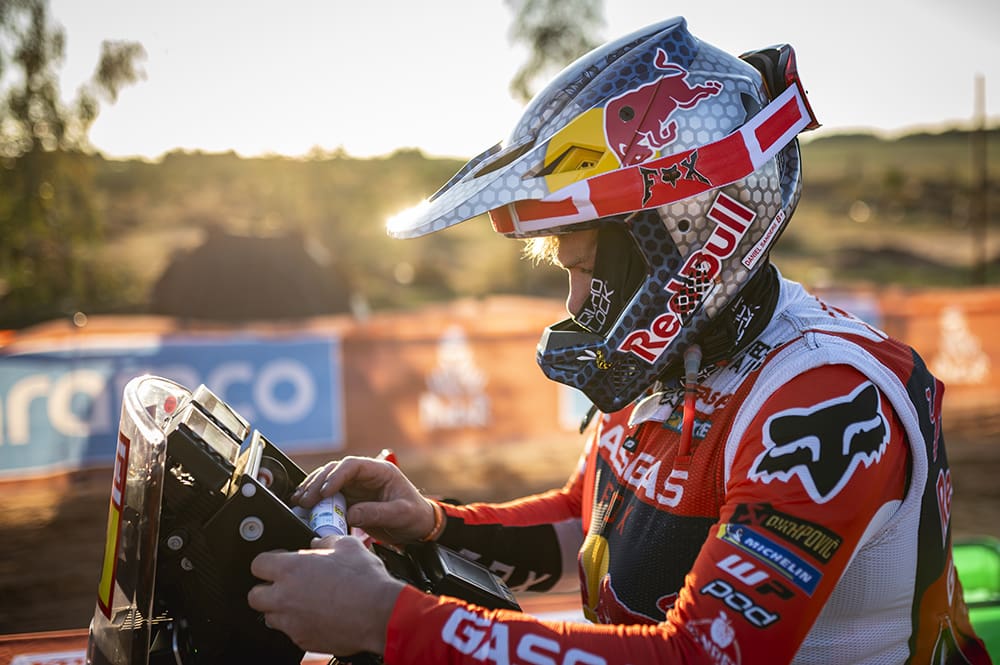
Despite riding most of the race with a 2cm thorn in his left arm, enduring an extremely uncomfortable dose of suspected food poisoning and losing 20 minutes on Stage 9, Sanders achieved his goal of winning the fourth stage and finishing seventh overall.
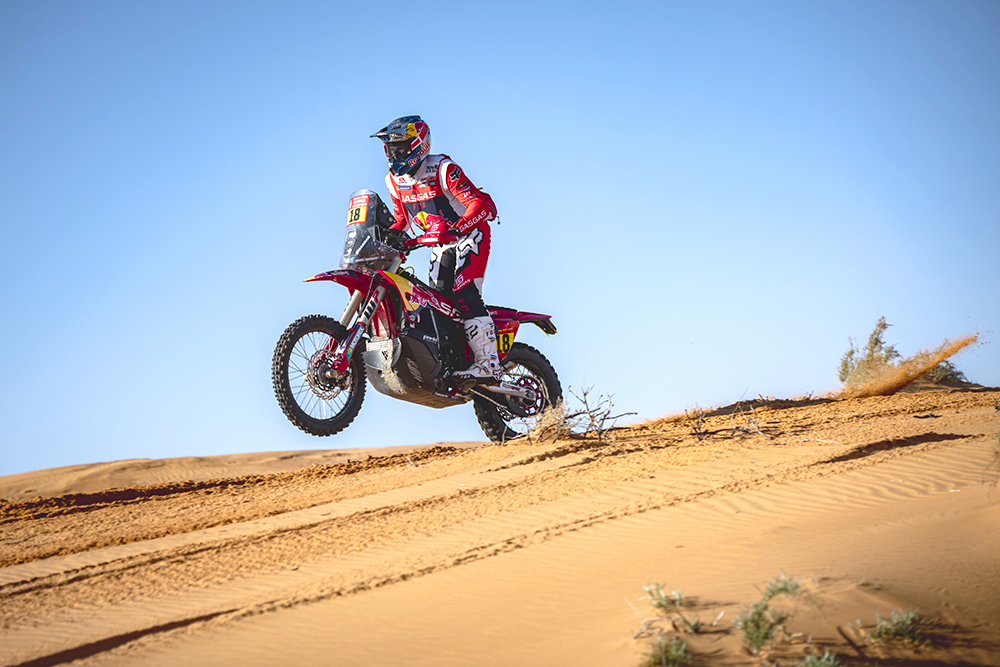
After all the drama and instances of sheer speed and potential, it’s perhaps the thorn in the arm that stood out for Sanders.
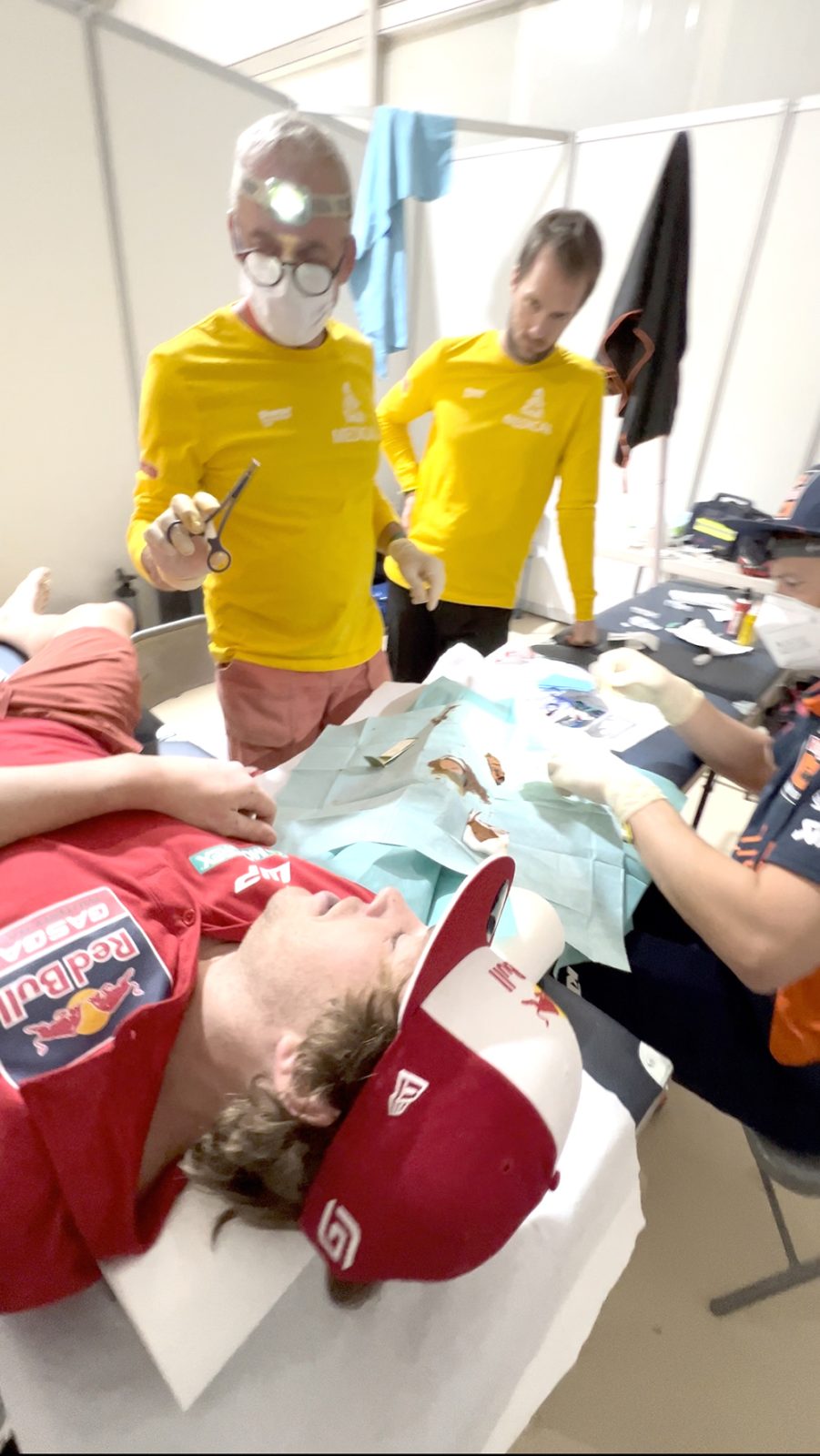
“The thorn was a funny one,” he said. “I slapped a tree on stage two and felt a pin prick and my muscles felt all funny when I went for the brake or throttle. I had the team doctor look at it after that stage and he couldn’t feel anything because it was in so deep. He was sure nothing was in my arm. The physio started mucking around with it and put a thumb on it and when I started moving my wrist around it started clicking and popping. The doctor did an ultrasound but was reluctant to take it out as it was so deep in the muscle, there was risk of infection. We decided to leave it in and perhaps that was the reason I got sick?
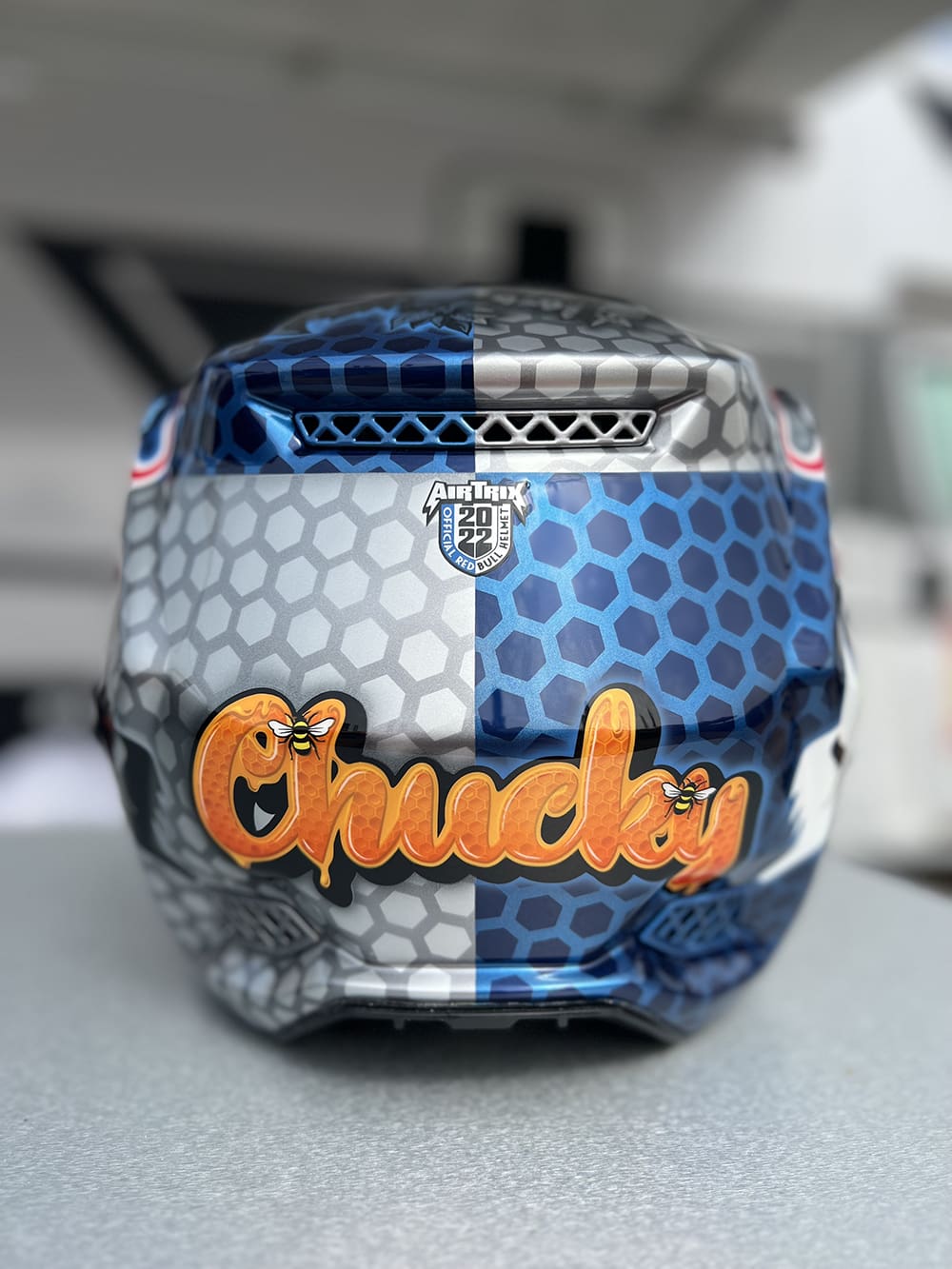
“By Stage 10 it started to come out and by Stage 12 it was hurting. I was riding along the dry lake beds that were all chattery and with the muscles slapping in my arm, I was screaming in my helmet. It was like being stabbed with a needle, even on the road sections. I had it removed after Stage 12 and I immediately felt so much better. I’ve got it in a jar and brought it home. It’s pretty cool actually.”
